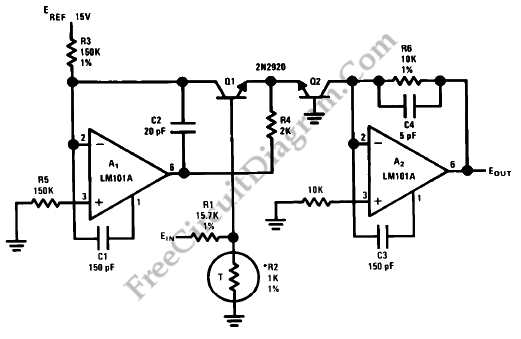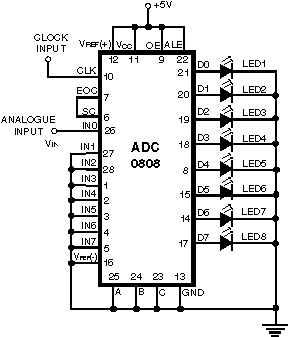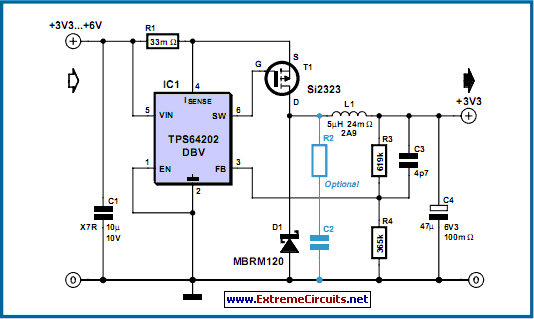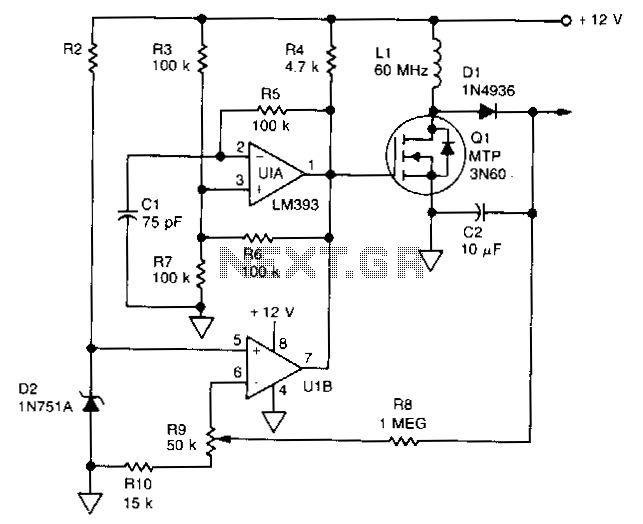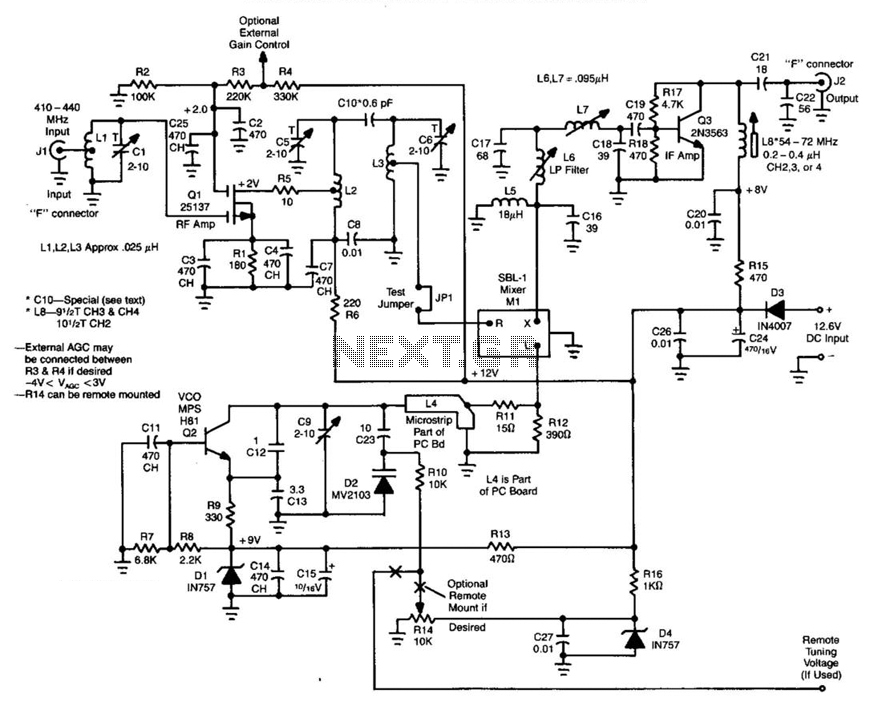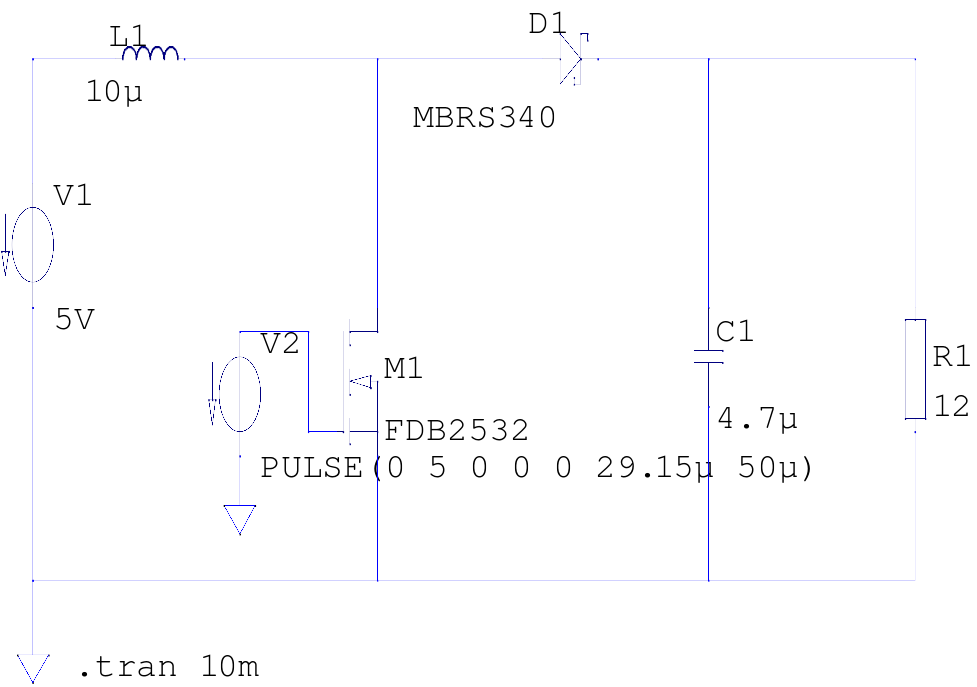
TMP01 AD654 Temperature-to-Frequency Converter
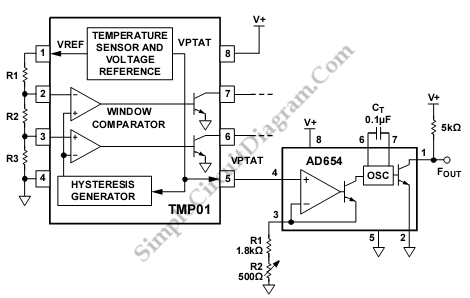
This is a TMP01 Temperature-to-Frequency Converter circuit. Converting voltage to the frequency domain is another common method of transmitting analog signals.
The TMP01 is a temperature sensor that outputs a frequency signal proportional to the temperature it measures. This circuit is designed to convert the analog voltage output of the TMP01 into a frequency signal, which can be easily transmitted and processed in various applications, such as digital temperature monitoring systems.
In the TMP01 circuit, the temperature sensor operates by generating a voltage that corresponds to the ambient temperature. This voltage is then fed into a frequency converter, which typically consists of a voltage-to-frequency converter IC. The converter takes the analog voltage input and outputs a frequency signal, where the frequency is directly proportional to the input voltage.
The frequency output can be interfaced with microcontrollers or digital signal processors, allowing for straightforward digital processing and monitoring. This method of converting temperature to a frequency signal provides advantages such as improved noise immunity and the ability to transmit data over longer distances without significant signal degradation.
Typical components in this circuit may include the TMP01 temperature sensor, a voltage-to-frequency converter IC, resistors, capacitors, and possibly a microcontroller for further processing. The design considerations include ensuring the accuracy of the temperature measurement, the linearity of the frequency output, and the stability of the circuit under varying environmental conditions.
When implementing this circuit, attention must be paid to the power supply requirements of the TMP01 and the converter IC, as well as the layout of the circuit to minimize interference and ensure reliable operation.This is a TMP01 Temperature-to-Frequency Converter circuit. Converting voltage to the frequency domain is another common method of transmitting analog.. 🔗 External reference
The TMP01 is a temperature sensor that outputs a frequency signal proportional to the temperature it measures. This circuit is designed to convert the analog voltage output of the TMP01 into a frequency signal, which can be easily transmitted and processed in various applications, such as digital temperature monitoring systems.
In the TMP01 circuit, the temperature sensor operates by generating a voltage that corresponds to the ambient temperature. This voltage is then fed into a frequency converter, which typically consists of a voltage-to-frequency converter IC. The converter takes the analog voltage input and outputs a frequency signal, where the frequency is directly proportional to the input voltage.
The frequency output can be interfaced with microcontrollers or digital signal processors, allowing for straightforward digital processing and monitoring. This method of converting temperature to a frequency signal provides advantages such as improved noise immunity and the ability to transmit data over longer distances without significant signal degradation.
Typical components in this circuit may include the TMP01 temperature sensor, a voltage-to-frequency converter IC, resistors, capacitors, and possibly a microcontroller for further processing. The design considerations include ensuring the accuracy of the temperature measurement, the linearity of the frequency output, and the stability of the circuit under varying environmental conditions.
When implementing this circuit, attention must be paid to the power supply requirements of the TMP01 and the converter IC, as well as the layout of the circuit to minimize interference and ensure reliable operation.This is a TMP01 Temperature-to-Frequency Converter circuit. Converting voltage to the frequency domain is another common method of transmitting analog.. 🔗 External reference
